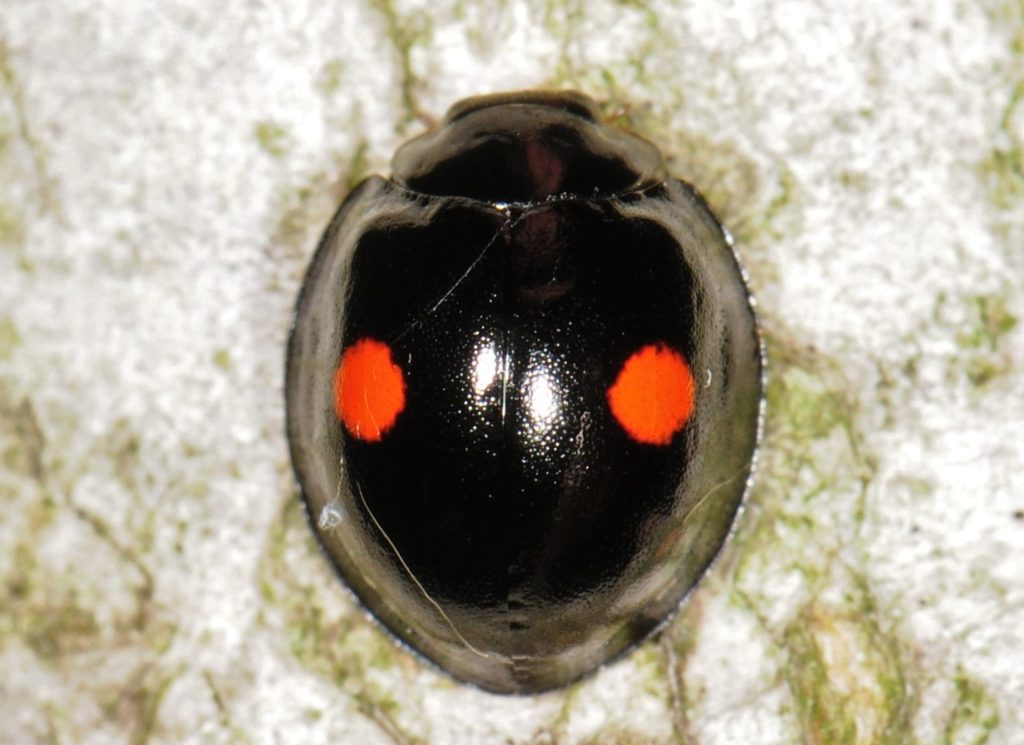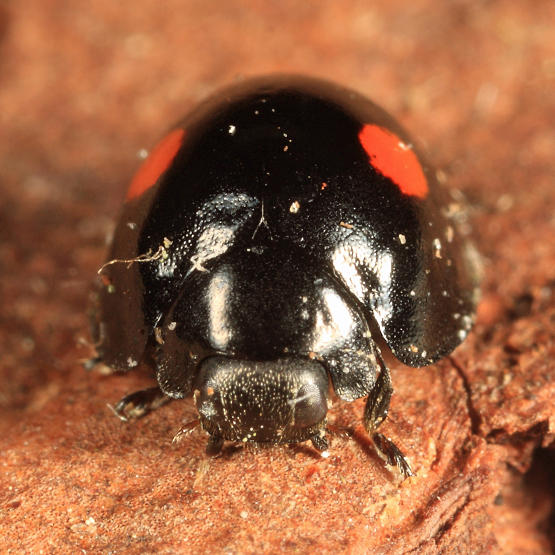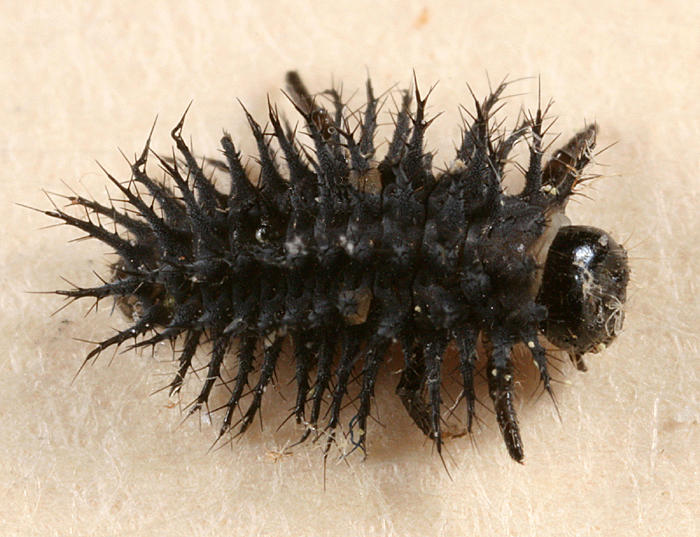
Twice-stabbed Lady Beetle © Jason Michael Crockwell
The Twice-stabbed Lady Beetle is native to the U.S. and Canada. It has two red spots on its wing covers and a solid black body. It lives primarily in forested habitats and feeds on aphids and other pests, making it an important species in both natural and commercial forests. This species overwinters in leaf litter.
Status
Native
The Twice-stabbed Lady Beetle has not been ranked in the United States. It is listed as Vulnerable in Nova Scotia, Saskatchewan, and Alberta; and ranked as Apparently Secure in Ontario and New Brunswick.
Last Seen
2021
Fun Fact
The Twice-stabbed Lady Beetle is showing some success at controlling the Elongate Hemlock Scale (Fiorinia externa Ferris), a species damaging North American hemlock trees.
Identification
The Twice-stabbed Lady Beetle is 3 to 5 mm in length.
- The beetle is very round in shape, and has an entirely black head, pronotum, and elytra, aside from two red spots, one on each elytron.
- When flipped over, the body of the Twice-stabbed Lady Beetle is black from the hind legs up to the head, and a reddish orange color on the abdominal segments (below the legs).
- Often confused with Chilocorus kuwanae. More information found here.
Habitat
Forests. Adult Twice-stabbed Lady Beetles have been found on vegetation and trunks of trees infested with scale insects, mealybugs, and aphids. Since the introduction of Beech Bark Disease, Twice-stabbed Lady Beetles have been associated with heavily infested beech trees.
General Range
Found across most of North America, excluding the west coast.
Food
Primarily eats scale insects, such as Beech Bark Scale. Will also eat adelgids, aphids, and other soft-bodied insects.
Life Cycle
Twice-stabbed Lady Beetles overwinter in leaf litter. They have been found to be active from early March through November in Vermont. One study in New York found that Twice-stabbed Lady Beetles mate from April to May, and lay their eggs in cracks or under loose bark of trees infested with scale insects. Adults seem to be most numerous from late June to early August. It appears that local populations of Twice-stabbed Lady Beetles have slightly different numbers of generations based on temperature and prey life cycles–it appears that Twice-stabbed Lady Beetles closely synchronize their life cycle with that of the most abundant prey in their region.
More Information
You can find more information about Twice-stabbed Lady Beetles using the following links:
Vermont Distribution
Visit the iNaturalist Observation Map or the Occurrence Record to find out where Twice-stabbed Lady Beetles have been seen in Vermont.








